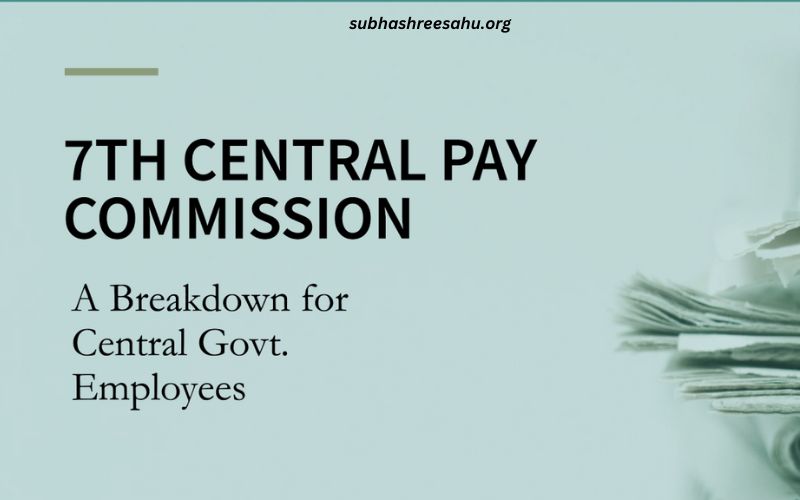Background of the 7th Central Pay Commission
The tradition of setting up pay commissions in India dates back to 1946, with the aim of reviewing and revising the salary structure of central government employees to ensure it remains competitive and reflective of economic changes. Each pay commission, typically established every 10 years, evaluates various factors such as inflation, cost of living, and the economic environment to recommend adjustments to salaries, allowances, and pensions.
The 7th CPC was notified in February 2014, and its mandate included:
- Examining the existing pay structure and recommending changes.
- Reviewing the principles governing the grant of allowances and benefits.
- Analyzing the economic conditions and their impact on government employees.
- Suggesting measures for rationalizing expenditure on salaries and pensions.
The Commission was expected to provide recommendations that would come into effect from January 1, 2016.
Key Recommendations of the 7th Central Pay Commission
The 7th CPC submitted its report to the government in November 2015. The report included a wide range of recommendations aimed at overhauling the existing pay structure. Some of the key recommendations were:
1. Pay Matrix
The 7th CPC introduced a new pay matrix to replace the previous pay band and grade pay system. The pay matrix provided a simplified and transparent structure, allowing for easier determination of salaries based on an employee’s level and years of service. It consisted of 18 levels, each corresponding to a specific pay range and progression path.
2. Minimum and Maximum Pay
The Commission recommended increasing the minimum pay from ₹7,000 to ₹18,000 per month, while the maximum pay for senior-most positions (such as the Cabinet Secretary) was set at ₹2.5 lakh per month. This adjustment aimed to address the disparity between the lowest and highest-paid employees, ensuring a more equitable distribution of salaries.
3. Fitment Factor
A fitment factor of 2.57 was proposed, which meant that the existing basic pay of employees would be multiplied by 2.57 to arrive at the new pay. This factor was designed to ensure a uniform increase across all levels of employees.
4. Allowances
The 7th CPC recommended rationalizing the various allowances provided to government employees. Some key changes included:
- House Rent Allowance (HRA): The HRA rates were revised to 24%, 16%, and 8% of the basic pay for employees residing in X, Y, and Z category cities, respectively.
- Transport Allowance: The transport allowance was rationalized, with a higher rate for employees in higher pay levels and a lower rate for others.
- Dearness Allowance (DA): The DA would continue to be calculated based on the Consumer Price Index (CPI) and would be revised twice a year.
5. Pension Reforms
For pensioners, the 7th CPC recommended a revised pension formula that took into account the number of years served and the last drawn salary. This formula aimed to provide a more equitable pension to retired employees and ensure financial security in their post-retirement years.
6. Performance-Related Pay
The Commission proposed the introduction of a performance-related pay (PRP) system to incentivize exceptional performance among government employees. This system would be linked to the annual performance appraisal and would reward employees who exceeded their targets and contributed significantly to their departments.
Implementation and Impact
The recommendations of the 7th CPC were accepted by the Government of India with minor modifications and were implemented from January 1, 2016. The new pay structure and allowances were welcomed by government employees, as they provided a significant boost to their salaries and benefits.
Economic Impact
The implementation of the 7th CPC recommendations had a substantial impact on the Indian economy. The increase in salaries and pensions led to a rise in disposable income for millions of government employees and pensioners, thereby boosting consumption and demand in various sectors. This, in turn, contributed to economic growth and helped stimulate the market.
However, the increased expenditure on salaries and pensions also posed a challenge for the government in terms of fiscal management. The higher outlay necessitated careful budgeting and allocation of resources to ensure that the additional expenditure did not adversely affect other developmental and welfare programs.
Employee Morale and Productivity
One of the key objectives of the 7th CPC was to enhance the morale and productivity of government employees. By providing a more rationalized and transparent pay structure, along with performance-linked incentives, the Commission aimed to motivate employees to perform better and contribute more effectively to their roles.
The introduction of the pay matrix and the fitment factor ensured that employees received a substantial and uniform increase in their salaries, which helped in addressing long-standing grievances related to pay disparities. The rationalization of allowances also brought more clarity and fairness to the compensation package.
Pensioners’ Welfare
For pensioners, the revised pension formula provided a more equitable and financially secure post-retirement life. The adjustments in pension calculations based on the last drawn salary and years of service ensured that retired employees received a fair pension that reflected their contributions during their service period.
The increase in pensions also had a positive impact on the financial well-being of retired employees, allowing them to lead a comfortable life and meet their.

